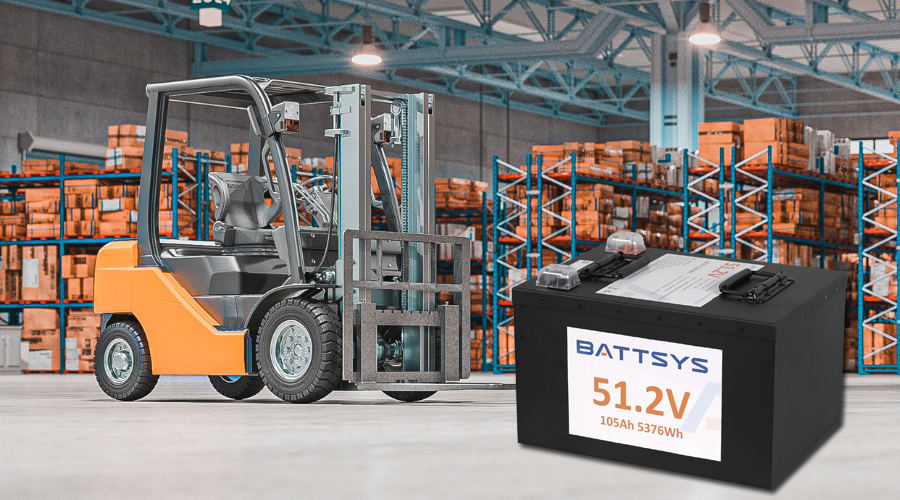Forklift lithium batteries replace lead-acid batteries.
With the continuous enhancement of social environmental awareness, the demand for electric forklifts has been increasing year by year. Currently, there are 65000 lead-acid battery forklifts in China each year, accounting for about 30% of the total market demand. Referring to the development history of forklifts in countries such as Europe and the United States, it is an inevitable trend for the proportion of electric forklifts in China to increase from the current 30% to 50% -70% in the future.
While experiencing the various environmental advantages of electric forklifts, customers have gradually discovered some limitations of lead-acid batteries, such as the production of flammable hydrogen gas during charging and the presence of irritating odors; The battery life is often unsatisfactory, and it deteriorates rapidly with the increase of charging times. Generally, domestic batteries have around 800 times, while imported lead-acid batteries have around 1200 times; The charging time of lead-acid batteries is longer than the battery life after charging, and customers with high workload need to configure multiple sets of batteries, which require frequent battery replacement during operation; The daily maintenance of lead-acid batteries is cumbersome and labor-intensive. These limitations often become a problem for customers using lead-acid batteries in daily use.

To address the limitations of lead-acid batteries, United Forklift Leasing has withdrawn from the lithium-ion battery leasing business. Compared to lead-acid batteries, lithium batteries have the following further advantages:
Lithium batteries are fully enclosed and do not produce gas during charging, making them maintenance free batteries for daily use.
Lithium batteries have fast charging function, with a full charging time of 1-2 hours. Customers can replenish their batteries at any time during lunch breaks or other work intervals, greatly reducing the proportion of backup batteries.
Lithium batteries decay slowly and have a lifespan of 3500-4000 cycles of charging. Even after 4000 cycles of charging, the discharge rate can still reach 80%. Lead acid batteries maintain an 80% discharge rate, domestic batteries can be charged 800 times, and imported batteries can be charged 1000-1200 times.
The charging efficiency of lithium batteries is 95%, compared to 75% for lead-acid batteries. This means that when a battery of the same capacity is fully charged, the amount of electricity required to charge a lithium battery is saved by more than 20% compared to lead-acid batteries. For customers who use a large amount of batteries, electricity cost savings are a very noticeable cost reduction.
As a new energy battery, although
lithium batteries have unique technological advantages that lead-acid batteries do not possess, on the other hand, lithium batteries also have price disadvantages. Lithium batteries of equal capacity are generally 3 to 5 times the price of lead-acid batteries, and the rental price of lithium batteries is also basically 3-5 times that of lead-acid batteries. Taking into account the advantages and disadvantages of lithium batteries, the use of lithium batteries is particularly suitable for the working conditions of customers with large battery consumption. Each electric forklift is equipped with 2-3 sets of lead-acid batteries and requires frequent battery replacement, such as in the logistics industry. For customers who have strict requirements for the charging environment and do not allow the production of flammable gases and irritating odors, such as those in the food and beverage industry, pharmaceutical industry, and chemical industry. For customers who have fine management of overall operating costs, consider customers whose energy-saving costs are sufficient to offset the increase in rental fees for lithium battery bodies.
